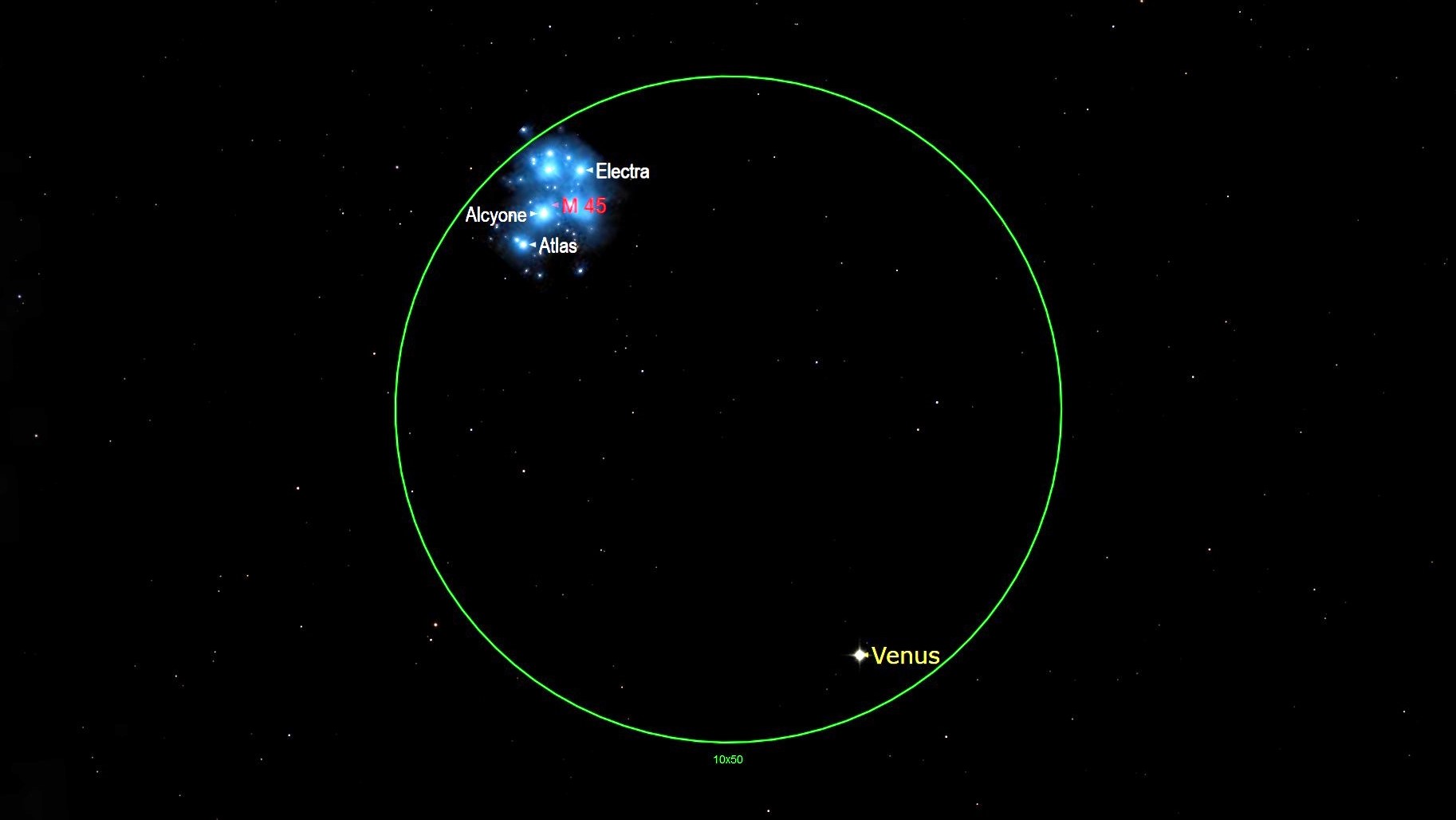Spot Venus near the Pleiades in the predawn sky on Thursday
The encounter will be visible with a pair of binoculars.

Look to the predawn sky on Thursday (June 23) to see Venus passing the dazzling Pleiades star cluster in the Taurus constellation.
This will make for an intriguing skywatching target as the encounter will be visible with a pair of binoculars, weather permitting.
The cluster, also designated as Messier 45 will be sitting a slim palm's width to the upper left (of 5.5 degrees to the celestial north) of Venus, according to Chris Vaughan, amateur astronomer with SkySafari Software who oversees Space.com's Night Sky calendar.
Related: The brightest planets in June's night sky: How to see them (and when)
"The optimum viewing time at mid-northern latitudes will be centered around 4 a.m. local time," writes Vaughan. "Observers at southerly latitudes will see the meet-up higher and in a darker sky about an hour later."
The exact time of the event varies depending on your specific location, so you'll want to check out a skywatching app like SkySafari or software like Starry Night to check for times. Our picks for the best stargazing apps may help you with your planning.
The Pleiades, also known as the "Seven Sisters" is an open star cluster consisting of more than 800 stars and is located about 410 light-years from Earth.
Get the Space.com Newsletter
Breaking space news, the latest updates on rocket launches, skywatching events and more!
If you're looking for a telescope or binoculars to see the Pleiades and Venus, our guides for the best binoculars deals and the best telescope deals now can help. Our best cameras for astrophotography and best lenses for astrophotography to prepare to capture the next stargazing photo.
Related: How to spot the Pleiades, Hyades and other star clusters in the winter night sky

Looking for a telescope for the next stargazing event? We recommend the Celestron Astro Fi 102 as the top pick in our best beginner's telescope guide.
Throughout June, skywatchers will be treated to other skywatching events including a rare "planet parade" where all five naked-eye planets will be visible in the predawn sky as they line up in their orbital order from the sun. From left to right in the southeastern sky, you'll be able to spot Mercury, Venus, Mars, Jupiter and Saturn all in a row.
The best opportunity to see this spectacle may come on June 24, as Mercury (usually hidden by the sun's glare) should rise about an hour before the sun, according to a press release from Sky&Telescope.
The moon will continue to journey past the morning planets finishing its planetary "meet and greet" with Mercury on June 27.
Follow us on Twitter @Spacedotcom and on Facebook.
Join our Space Forums to keep talking space on the latest missions, night sky and more! And if you have a news tip, correction or comment, let us know at: community@space.com.

Daisy Dobrijevic joined Space.com in February 2022 having previously worked for our sister publication All About Space magazine as a staff writer. Before joining us, Daisy completed an editorial internship with the BBC Sky at Night Magazine and worked at the National Space Centre in Leicester, U.K., where she enjoyed communicating space science to the public. In 2021, Daisy completed a PhD in plant physiology and also holds a Master's in Environmental Science, she is currently based in Nottingham, U.K. Daisy is passionate about all things space, with a penchant for solar activity and space weather. She has a strong interest in astrotourism and loves nothing more than a good northern lights chase!









